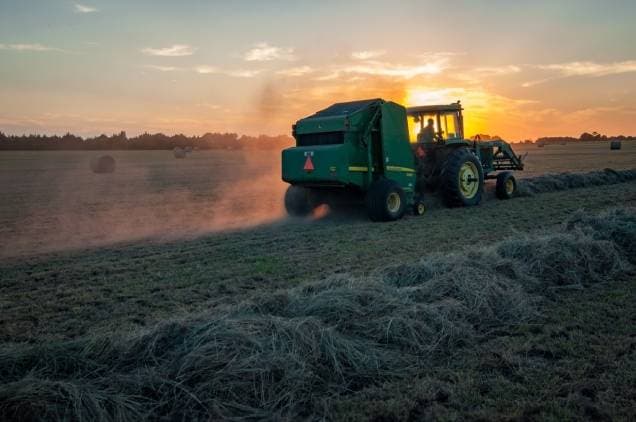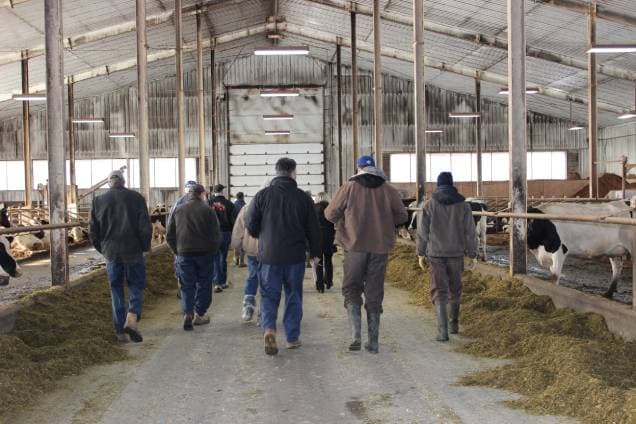
Section Five: Staying Prepared
If an Incident Occurs
To-do:
- Develop incident investigation plan.
- Develop a remote location plan.
- Map your farm.
- Complete farm contact form.
With leadership, ongoing training and communications – workplace injuries are preventable.
You can establish a strong safety culture within your organization through an understanding of your environment, continual education, and by empowering your employees to not take on any task unless it can be done safely.
The goal of any farm should be to avoid a workplace injury or incident, but if one does occur you need to be prepared to act quickly.
If an incident occurs, do not disturb an accident scene that has resulted in serious injury or death unless it is necessary to:
- Attend to an injured or deceased person;
- Prevent further injuries; or
- Protect property that is endangered as a result of the accident.
Incident Investigation and Reporting
Incident investigation and reporting should be part of a farm safety plan whereby all incidents are documented, investigated, and follow-up action is taken in order to prevent similar incidents from reoccurring. Incident reporting is not a blaming process, but a means to identify and correct root
causes and address the hazard to reduce the chance of re-occurrence.
Incident investigation involves the following:
- Emergency response – eliminate any further hazards and respond to injuries.
- Secure the scene – do not disturb the scene, and identify any potential “witnesses” to the incident.
- Survey the scene – review what happened, talk to “witnesses”
- Prepare a report – a report of the incident should be documented and include any recommendations for corrective actions.
It is important to determine what types of incidents will be investigated so that everyone is aware. The information gathered should be consistent and documented accordingly.

You will find an example Incident Investigation Policy and Report Forms in the workbook.
Reporting an Accident
An employer is required to report any serious injury or incident that endangers life or causes permanent injury. You must report:
- Fatality – immediately
- Serious injury – as soon as possible or within 24 hours (e.g. unconciousness)
- Serious incident – as soon as possible or within 24 hours (e.g. major release of hazardous substance).
Report by email, mail or phone:
Phone: 1-800-952-2687
email: ohsdivision@novascotia.ca
There may also be reporting requirements on incidents to WCB Nova Scotia or your private insurer, depending on your insurance choice. These are separate from the reporting to the Department of Labour and Advanced Education.
Preparing for an Emergency
The top priority is always to prevent an injury or incident from happening – but if one does occur, an injury to an employee or damage to equipment can be mitigated if addressed quickly.
Being prepared for an emergency is in the best interest of your family, employees, animals, neighbouring farms and visitors.
Creating an emergency plan will provide your family, employees, neighbours and visitors with the confidence that you take their safety seriously as well as make sure that the decisions you make under pressure in an emergency situation have been previously thought-out and reviewed with your team.
- Assess Possible Emergency Scenarios: Prepare a list of all of the possible emergency situations that could occur on the farm, i.e. a chemical spill, machinery or livestock injury, a worker collapsing in a confined space, dangerous weather conditions, fires, explosions, etc.
- Plan for Action: Next to each of the items you’ve listed as possible emergency scenarios, detail a plan for your team to follow to manage the situation – including role descriptions. It’s important that everyone on staff is trained in each role, so that the job will be carried through no matter who is on shift or present in the emergency situation.
- Create a Communications System: When at all possible, make sure that an employee is not working on a task in isolation of others. If more than one employee cannot be physically present to perform a task, make sure that a two-way radio or cell phone is made available. Check in regularly – both through the communications system and in-person. This system should also put in place a system for all employees to “check in” if an emergency occurs; this could be a meeting location off of the property or an outside number to call to act as a “roll call”.
- Identify Resources: Always make sure first aid supplies are monitored and replaced after use in every work location and vehicle. Remember that your best resource in an emergency situation is your team – which means first aid training and CPR should be offered to all employees. Resources must also include a list of emergency contacts – which should be present in multiple locations – and routes to the hospital, police station and fire station.

A contact form for you to include emergency numbers has been inserted in your workbook.
First Aid Remote Location Plan
A first aid remote location plan is required when a worksite is more than 30 minutes from an emergency care facility. There are some exceptions to this:
- No worker spends more than 10% of their time at that location within a 4 week period.
- Employees may spend between 10-25% of their time, over a 4 week period at that location, and the employer can ensure:
- injured person can be transported to an emergency care facility within a reasonable amount of time;
- a means of transportation;
- a means of communication
- first aid supplies and attendants; and
- hazards and risk of injury are minimal.
If a plan is required it must include:
- a plan for meeting the minimum first aid requirements (supplies and attendants);
- method of transportation of injured employees;
- means of communication;
- number of required attendants and qualifications; and
- list of first aid supplies.
Farm Mapping
To have a clear picture of the farm property it can be useful to draw a map of your farm with all buildings. Buildings should be identified as residence, animal housing, storage, machinery, shop, etc. The hazards or important information for emergency responders should be included, such as: location of fuels, chemicals, etc. AND shutoffs for power, fuels, etc.
It is also useful to map out the surrounding properties which are farmed so that you have a clear idea of how you will respond to an emergency at an off-site location. There are a number of online tools you can access for maps of your farm (e.g. Nova Scotia Coordinate Referencing System viewer).
TIP
Not all farm fields and properties have civic numbers. Be sure to note the closest one so that it can be given in case of an emergency.
This workbook previously discussed the importance of ongoing and open communications with everyone on the farm. These conversations must include time to review the emergency preparedness plan on a consistent basis. Make sure everyone is comfortable with the plan, walk through the scenarios, and take part in drill exercises where people take on different assigned roles.
When an emergency occurs, decisions will be made at a rapid pace, adrenaline will be running high. Having gone over the process multiple times on an ongoing basis will give everyone the confidence they need to act quickly and effectively.


